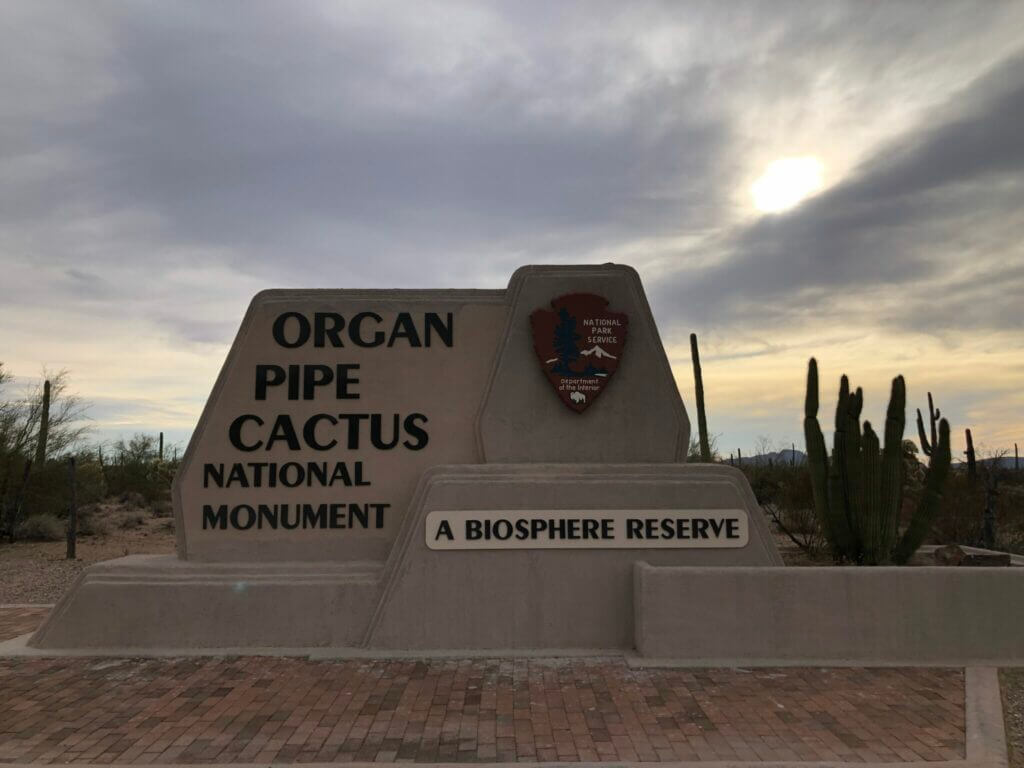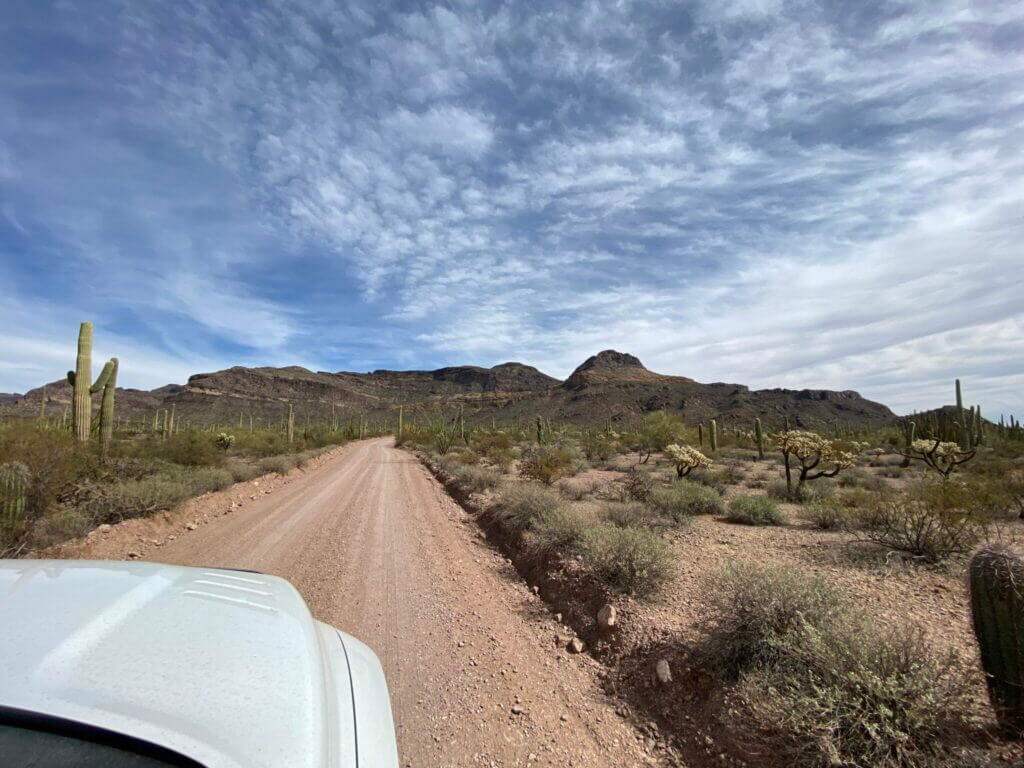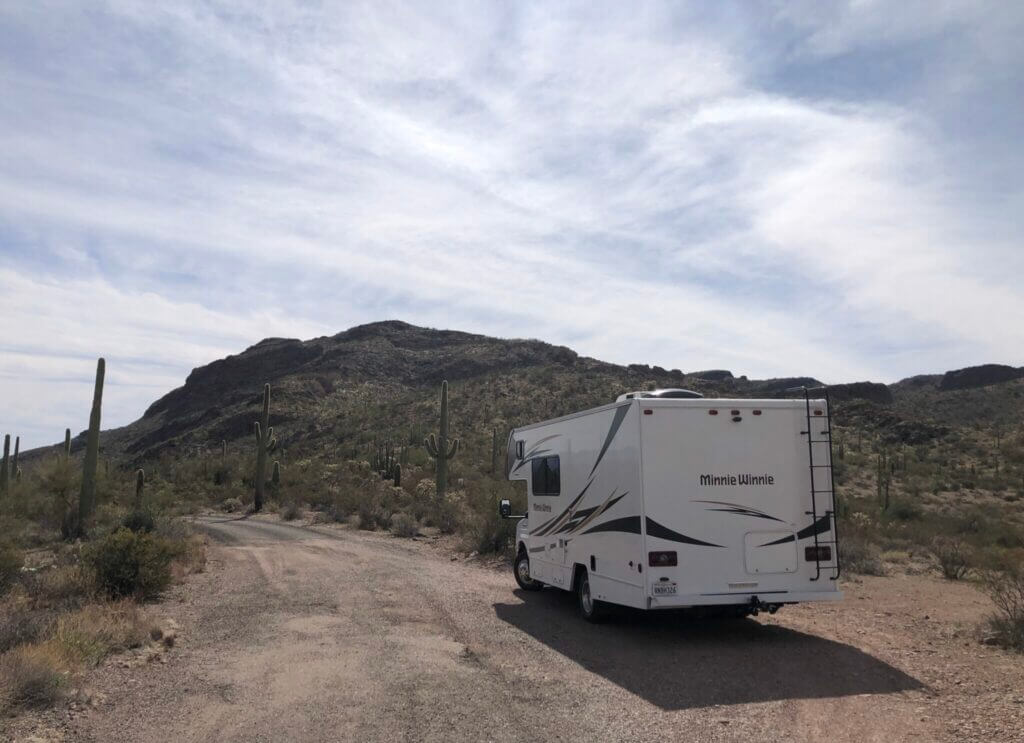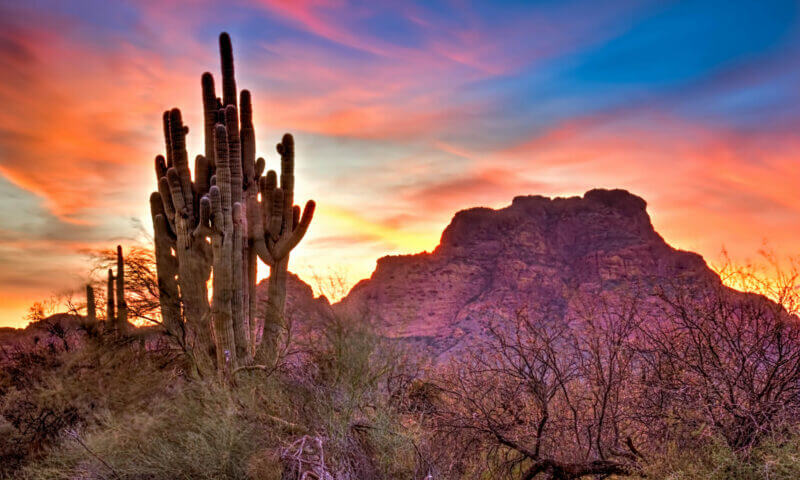Table of Contents Show
The state of Arizona has much to offer, but many don’t know about Organ Pipe Cactus National Monument. Due to its location, this National Monument is a destination you have to plan to visit. But trust us when we say it’s a location you’re going to want to add to your list!
You don’t need to spend much time at Organ Pipe Cactus National Monument, but you should plan your visit wisely to see everything worthwhile.
Read on to find out how to spend the perfect weekend in Organ Pipe Cactus National Monument!
How Big is Organ Pipe Cactus National Monument?
Location:
Organ Pipe Cactus National Monument
10 Organ Pipe Drive
Ajo, Arizona
This National Monument totals 517 square miles of the Sonoran Desert. It is named after the organ pipe cactus, which branches look similar to an organ pipe. This is the only area in the US where you can find the organ pipe growing wild!
The senita cactus is another cactus in the US that can only be found in the monument. This cactus looks very similar to the organ pipe, but the main difference is that you will find a thick bunch of spines near the top of its branches.
According to the National Park Service, Organ Pipe National Monument “was created in 1937 as a way to preserve a representative area of the Sonoran Desert. The new monument was part of a movement in the National Parks to protect not just scenic wonders but also the ecological wonders of the country. Over 75 years later, Organ Pipe Cactus is now one of the best-preserved examples of the Sonoran Desert wilderness.”

What To See in Organ Pipe Cactus National Monument
Ajo Mountain Drive
This 21-mile loop drive is the most popular drive in Organ Pipe Cactus National Monument, but thankfully not crowded. This is a well-maintained dirt road with some sections of the washes paved. Make sure to stop at the Kris Eggle Visitor Center to scan the QR code for a free Ajo Mountain Road Guidebook. This book explains the landscape, cacti, and history of the park.
Estes Canyon Hike
This hiking trail is a 3.1-mile loop, with an elevation gain of 865 feet. There is an optional one-mile spur trail called Bull Pasture that will lead you to a viewing point where you can see Mount Ajo, the highest peak in the monument at 4,808 feet.
Puerto Blanco Drive
Puerto Blanco Drive was reopened in 2014 and provides access to the Pinkley Peak Picnic Area, Red Tanks trailhead, Dripping Springs, and Quitobaquito Springs. Take your time on this loop trail to stop and read the informational signs on the ecology of the Sonoran Desert. If you get to Organ Pipe Cactus National Monument early, we recommend doing this loop first.
According to the monument’s website, “the North Puerto Blanco and South Puerto Blanco Loop is 41 miles in total and will take roughly 4 to 5 hours round-trip. High clearance vehicles are recommended beyond Pinkley Peak.”

Senita Basin
The Senita Basin can be accessed via South Puerto Blanco Drive. This part of Organ Pipe Cactus National Monument has some of the lowest elevations in the monument and is where the rare senita cactus grows. Here you will find a flat 3.1-mile hiking trail. If you’re looking for a longer hike, opt to hike to the Victoria Mine.
Quitobaquito Springs
This is a small but very important spring located on the southwest corner of the park. Quitobaquito is a natural spring that has been around for over 16,000 years, proving water for the local wildlife and humans alike. You can visit the spring via a short walking path from the parking area.
Camping in Organ Pipe Cactus National Monument
Twin Peaks Campground
Twin Peaks Campground is located 1.5 miles from the Kris Eggle Visitor Center. Here you will find 208 sites with only four of those being large enough to fit RVs up to 45 feet. 34 of those sites are reserved for tent camping only.
All of the sites are dry camping, meaning they don’t have water, electricity, or sewer. However, there is a dump station and potable water in the park for RVs. Additionally, all of the restrooms have flushing toilets and running water.
This campground offers both reserved sites and first-come, first-serve sites. You can reserve sites between 24 hours and 12 months in advance via Recreation.gov or by calling 1-877-444-6777. The campground fee is $20/night and this is the only campground in Organ Pipe Cactus National Monument that has RV sites.

Alamo Canyon Campground
Alamo Canyon Campground is for primitive tent camping only. There are only four established sites in the campground, and they all include charcoal grills, tables, pit toilets, and trash cans.
To snag a campsite you will have to self-register at the campground and there is a limit of five people per site. The campground fee is $12/day.
Is It Safe to Visit Organ Pipe National Monument?
Considering the park is located on the Arizona-Mexico border, many people wonder if the monument is safe to visit.
While the National Park Service does say that illegal border crossing occur daily, the park is safe to visit. It is doubtful that you will encounter any illegal activity but it’s important to know that it is possible.
There are a few safety tips you should keep when mind when hiking or exploring Organ Pipe Cactus National Monument. These include using common sense when making decisions, not picking up hitchhikers, locking your vehicle, avoiding unofficial trails, and reporting any suspicious behavior to the park staff.
Finally, make sure that your vehicle has enough fuel before heading into the park. You’ll also want to bring food, sunscreen, and plenty of water. Even in the winter, Arizona heat is nothing to mess with!







Miss that area. Lived close to Bisbee, Tombstone, Sierra Vista area. I enjoyed all my weekend adventures.